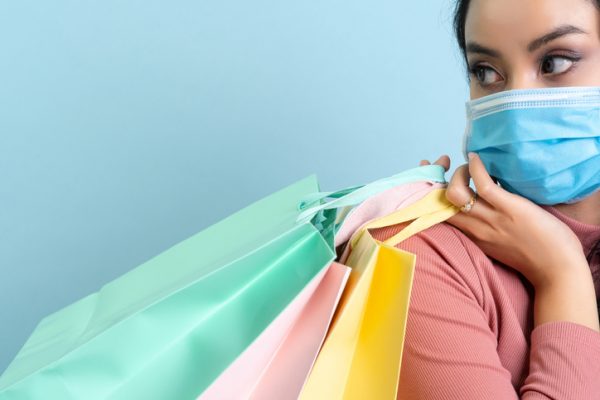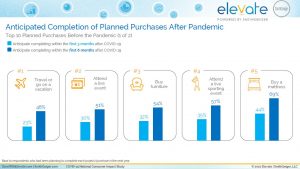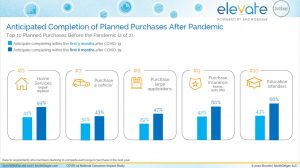
Author: Annette Malave, SVP/Insights, RAB
As states are in various phases of reopening, consumers find themselves in various stages of their own phases. These phases continue to shift and change the behaviors that had once been routine to so many. In order to meet the challenges, needs and concerns of their customers, businesses will need to be nimble to best address and meet their customers’ expectations.
While consumers are being cautiously optimistic, they are looking forward to the reopening. Based on various waves of survey data from marketing research firm SmithGeiger and its Elevate division, U.S. consumers have a more positive outlook for their personal financial recovery versus that of the county. Specifically, 27% believe that they will rebound in two to three months and 37% in six to 12 months. However, nearly half believe that it will take six months to a year for the country to rebound.
We’ve seen before that consumers are ready to go and shop. Shopping at a local merchant remains a top activity that consumers plan on doing once all restrictions are lifted. There are other also other activities and delayed plans that consumers want to complete, but as mentioned, consumers are still being cautious.
As local businesses communicate that they are open for business, strong consideration should be given to how consumers’ purchase habits have changed – namely when they plan on making a purchase. It is fair to assume that these changes have altered the consideration and purchase cycle dramatically for some consumers. The promotion of products and services by businesses should include the shorter and longer purchase intention.
Based on the SmithGeiger/Elevate COVID-19 Consumer Insights analyses, there are variances as to when consumers may complete pre-COVID-19 planned purchases. For example, 32% plan to purchase furniture three months after COVID-19, while 54% will complete it in six months. Thirty percent will purchase a vehicle three months after the pandemic, while 43% will do so within six months.


Whether products are considered essential or not, consumers still want a deal. Across all age groups, discounts remain one of the top reasons to buy. Touchless delivery and/or pickup and the ability to buy online come in second and third has slight variations among demos.
Juggling all these considerations when trying to reach consumers might be a little overwhelming for local businesses. As we all know, local businesses have been some of the hardest hit during the pandemic. It will require careful consideration, nimbleness and developing a message that resonates with them, addressing their needs and concerns. As a community-centric medium, Radio checks all these boxes. Broadcast Radio is a local medium that has helped people stay informed and provided the information that people need during this pandemic – from safety measures to products and services that are open for business. Radio reaches the masses – today’s rapidly changing consumer.


When it is noted ‘plan on completing after Covid-19…’ – how is after Covid defined?
Thank you!
Thanks for your question Laurie. SmithGeiger defined that as when the pandemic is over not a specific date.